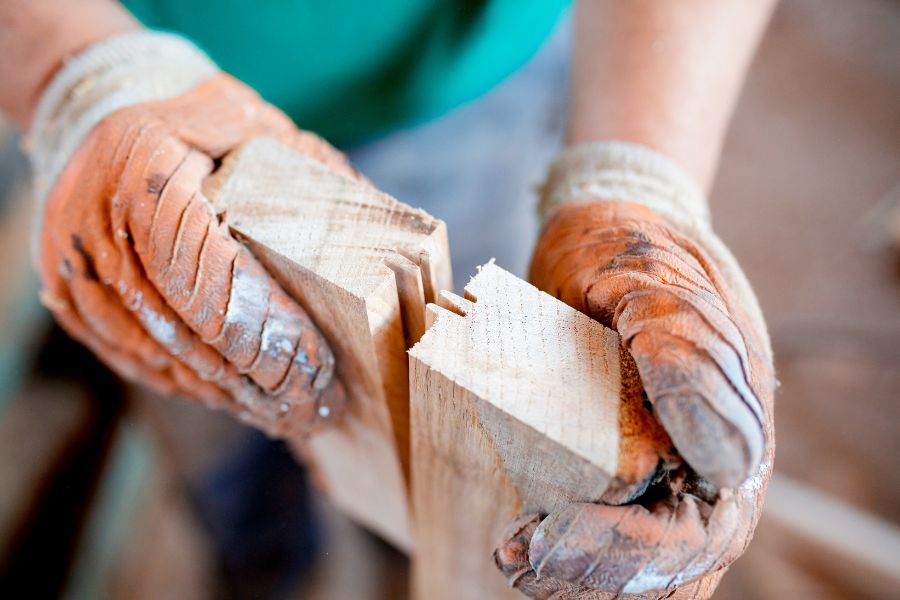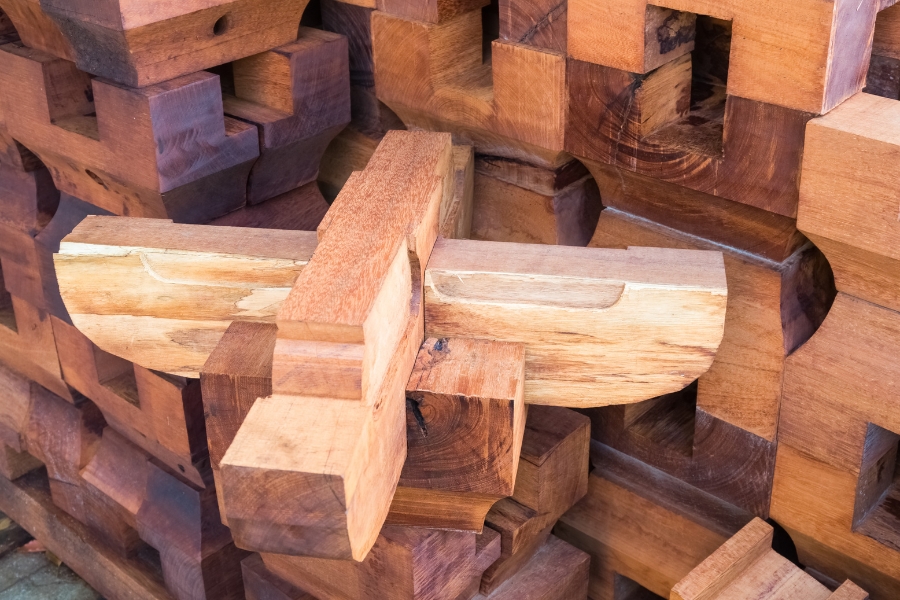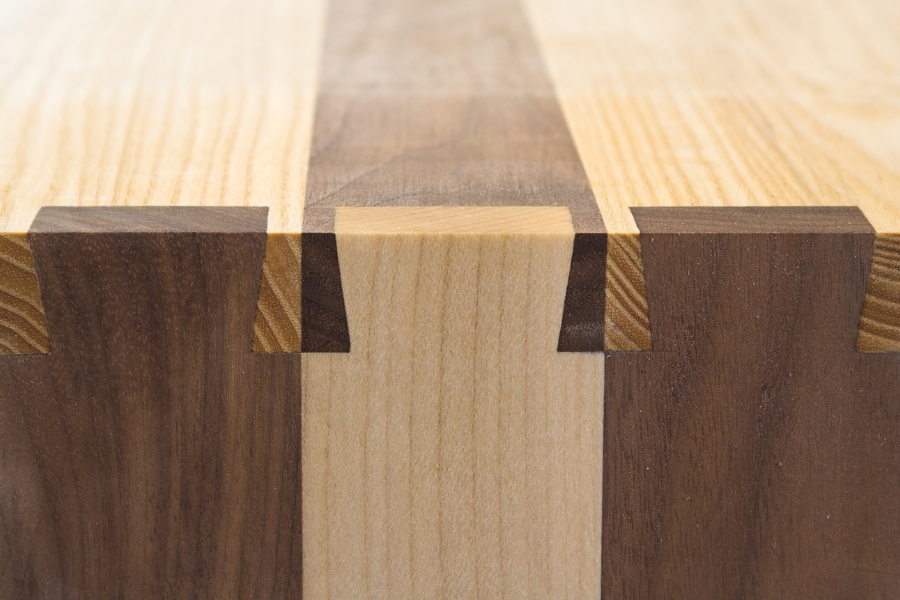
Built to Last: Why Strong Wood Joinery Is Crucial for Creating Quality Wooden Furniture
No matter how you slice it, if you want to build wooden furniture, you’re going to need a ton of tools and materials.
Off the top of your head, this may include things like a hammer, drill, saw, nails, and glue.
But if you want to build high-quality furniture that will last a lifetime, strong wood joinery is just as important as having the right tools and materials.
If you’re not a carpenter, you may not have heard of them, but wood joinery techniques like dovetail, mortise-and-tenon, and finger joints are more than just construction methods; they’re the backbone of your furniture’s strength, stability, and longevity.
Whether you want a sleek dining room table, a sturdy bookshelf, or something else entirely, the way the individual pieces of wood fit together is what sets custom-made high-quality furniture apart from mass-produced alternatives.
Well-executed joinery ensures that your furniture can withstand years of use without weakening or falling apart.
Because instead of relying on nails, screws, or adhesives, master woodworkers can use precision-cut joints that fit seamlessly, allowing the wood to naturally expand and contract with environmental changes.
This approach not only makes your furniture more durable but also highlights the craftsmanship involved in the process, as you’ll be creating furniture that is as beautiful as it is functional.
So, if you want to learn more about the importance of strong wood joinery, so you can make sure you’re buying the best quality furniture you can, this is an article you’re not going to want to miss.
What Is Wood Joinery?
Wood joinery refers to the method and craftsmanship involved in connecting two or more pieces of wood to form a solid, stable structure.
It’s a fundamental aspect of woodworking that ensures pieces fit securely and will stay in good shape for years to come.
With that in mind, rather than relying solely on nails, screws, or glue, wood joinery techniques are designed to create joints that enhance the strength, flexibility, and longevity of your furniture.
There are many types of wood joints, each with a unique purpose, but the choice of joinery depends on the type of project, your aesthetic goals, and how the furniture will be used.
In any case, proper joinery not only ensures that your furniture remains durable and stable but also allows for natural wood movement, which prevents warping or splitting over time.
However, ensuring strong wood joinery requires skill and precision, as each cut must fit perfectly to achieve a seamless connection.
What Are the Different Types of Wood Joinery?

Wood joinery techniques vary in terms of their complexity, strength, and aesthetics, but they each have their own use when it comes to furniture making.
Each joinery type serves a purpose, balancing strength, appearance, and construction time, and ensuring the final piece is both durable and visually pleasing.
With that in mind, below are some of the most common types of wood joints:
Mortise-and-Tenon Joint
A classic and strong joint, the mortise (a hole or slot) fits the tenon (a projecting piece) snugly.
It’s often used for furniture frames like chairs and tables due to its durability and ability to withstand heavy use.
Dovetail Joint
Recognized for its interlocking wedge-shaped pins and tails, this joint provides exceptional strength and resistance to pulling apart.
Common in drawers and boxes, dovetail joints are not only functional but also decorative.
Finger Joint
Similar to dovetails but with straight edges, finger joints are used to join two pieces of wood at right angles.
They provide a solid connection, along with a unique, modern visual appeal.
Butt Joint
A butt joint is a simple joint where two pieces of wood are joined end-to-end, often reinforced with screws or dowels.
This kind of joint is quicker to construct, but it’s less sturdy and used primarily in basic framing.
Lap Joint
In a lap joint, two pieces of wood overlap at the ends.
This type of joint tends to be used when strength is needed without adding extra bulk, such as in cabinets and frames.
Rabbet Joint
This joint involves a recessed cut along the edge of a board which can fit into another piece.
Rabbet joints are commonly used in the construction of cabinets and bookshelves to create a flush, secure connection.
Dowels and Biscuits
For this technique, wooden dowels or compressed wood “biscuits” are inserted into holes or slots, adding strength and alignment to butt or mitre joints.
Why Is Strong Wood Joinery so Important?

Strong wood joinery is critical for furniture making because it directly affects the durability, strength, and appearance of every piece.
Well-constructed joints ensure that your furniture can withstand regular use, environmental changes, and the test of time, making them a key element when it comes to high-quality craftsmanship.
Having said that, here are some of the reasons why strong wood joinery is so important:
Durability and Structural Integrity
The primary purpose of wood joinery is to create secure connections between individual pieces, ensuring your furniture will be around for many years.
But if you use weak or improperly executed joints, this can result in wobbly chairs, unstable tables, or cabinets that come apart with minimal stress.
At any rate, strong wood joinery helps distribute weight evenly, providing the stability needed for furniture to function reliably.
Longevity
High-quality furniture should last for generations, and strong wood joinery plays a significant role in that longevity.
Unlike furniture held together with nails, glue, or screws, which can loosen over time, precision joints stay tight even after many years of use.
Strong joinery also accounts for the natural expansion and contraction of wood due to humidity and temperature changes, which helps to prevent cracking or warping.
Aesthetics and Craftsmanship
Some wood joints, like dovetails and finger joints, are designed to be both functional and visually appealing, which adds an element of artistry to your furniture.
Visible, well-crafted joints enhance the beauty and uniqueness of every piece, showcasing the skill of the woodworker who built it.
Those who are looking for custom-made furniture tend to appreciate these details, which signal quality and craftsmanship.
Cost-Effectiveness
Investing in well-made furniture with strong wood joinery can save you quite a bit of money in the long run.
While cheap, mass-produced furniture might seem more affordable initially, it often breaks down quickly, requiring frequent repairs or replacements.
But if you choose to invest in furniture with solid joinery, you can rest assured it’s built to last, offering better value over time.
Design Flexibility
Strong wood joinery allows for more creative and complex designs that would not be possible with weaker joints.
For example, mortise-and-tenon joints enable the creation of intricate chairs and tables with angled legs, while dovetail joints make sturdy yet elegant drawers.
This flexibility ensures that form does not need to be sacrificed for function.
Looking for a carpenter in Kelowna to build high-quality wooden furniture?
Our master woodworker, Andy Ingram, has over 30 years of experience. For more details, contact us or check out our portfolio to see what we’re capable of creating.